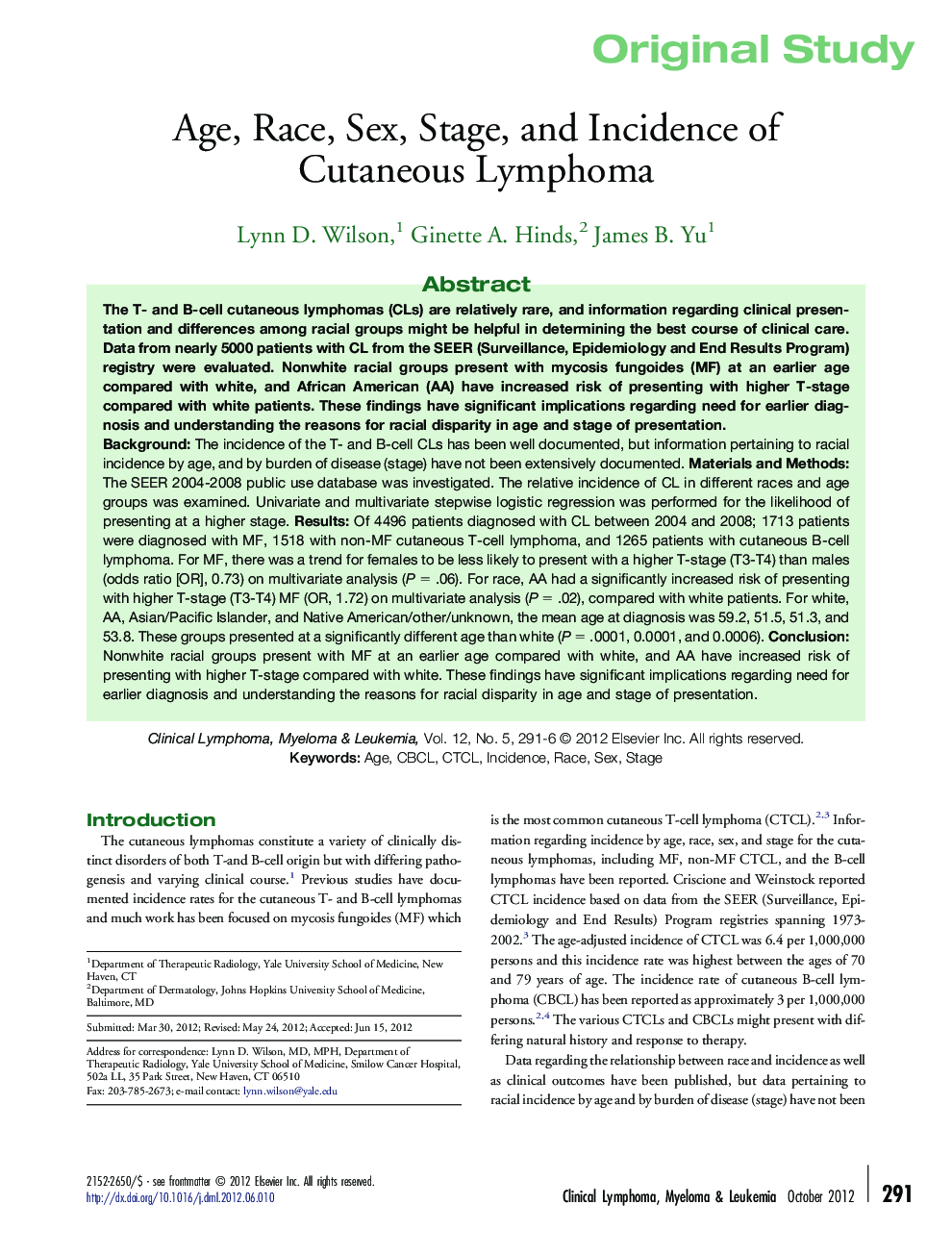| Article ID | Journal | Published Year | Pages | File Type |
|---|---|---|---|---|
| 2755247 | Clinical Lymphoma Myeloma and Leukemia | 2012 | 6 Pages |
BackgroundThe incidence of the T- and B-cell CLs has been well documented, but information pertaining to racial incidence by age, and by burden of disease (stage) have not been extensively documented.Materials and MethodsThe SEER 2004-2008 public use database was investigated. The relative incidence of CL in different races and age groups was examined. Univariate and multivariate stepwise logistic regression was performed for the likelihood of presenting at a higher stage.ResultsOf 4496 patients diagnosed with CL between 2004 and 2008; 1713 patients were diagnosed with MF, 1518 with non-MF cutaneous T-cell lymphoma, and 1265 patients with cutaneous B-cell lymphoma. For MF, there was a trend for females to be less likely to present with a higher T-stage (T3-T4) than males (odds ratio [OR], 0.73) on multivariate analysis (P = .06). For race, AA had a significantly increased risk of presenting with higher T-stage (T3-T4) MF (OR, 1.72) on multivariate analysis (P = .02), compared with white patients. For white, AA, Asian/Pacific Islander, and Native American/other/unknown, the mean age at diagnosis was 59.2, 51.5, 51.3, and 53.8. These groups presented at a significantly different age than white (P = .0001, 0.0001, and 0.0006).ConclusionNonwhite racial groups present with MF at an earlier age compared with white, and AA have increased risk of presenting with higher T-stage compared with white. These findings have significant implications regarding need for earlier diagnosis and understanding the reasons for racial disparity in age and stage of presentation.
